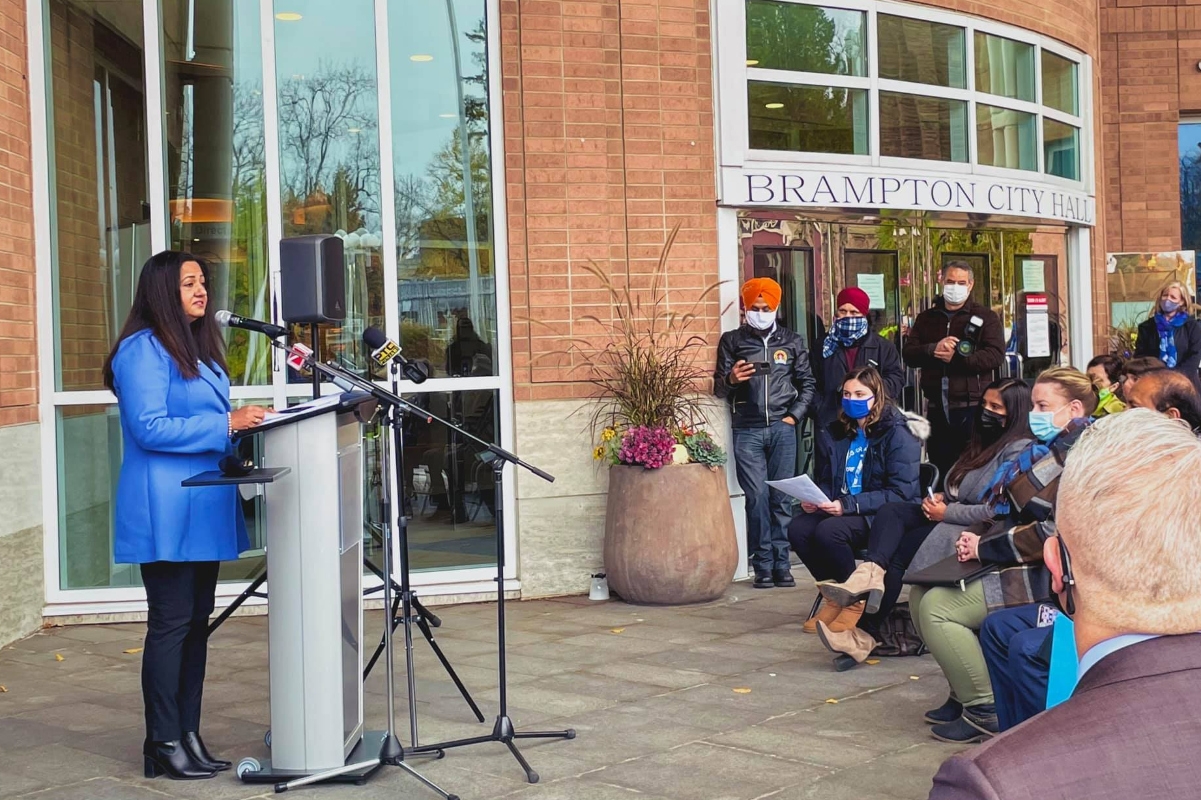Canadians will finally have a proper legal framework to address the growing problem of diabetes, a disease disproportionately affecting Indigenous Peoples, Canadians of African and South Asian ethnicity, and people with lower income and education levels.
The National Framework for Diabetes is due to be delivered by the end of June 2022, as stipulated in Bill C-237 sponsored by the Liberal MP for Brampton South Sonia Sidhu and enacted on June 29, 2021. The bill received unanimous support from all political parties thanks to tireless efforts of advocates like Sidhu and diabetes organizations.
The achievement comes on the 100th anniversary of the life-saving and revolutionary discovery of insulin in Canada.
Canada’s health minister is now working with provinces and territories, organizations such as Diabetes Canada and JDRF, Indigenous organizations and other stakeholders to create the framework to support diabetes prevention, treatment and rehabilitation. It will also help to identify the training, education and guidance for health care professionals involved in the prevention and treatment of diabetes.
India-born Sonia Sidhu, an MP for Brampton South since 2015, has been the leading voice in the #LetsDefeatDiabetes campaign here in Canada. She had entered politics with 18 years of experience in health care and an intimate understanding of the country’s health care needs.
Her motion in 2019 to make November the Diabetes Awareness Month was also unanimously passed by the House of Commons.
This year, Sidhu won the Frederick G. Banting Award from the Canadian Diabetes Association for her efforts to raise awareness of diabetes.
Diabetes prevalence among South Asians
Diabetes and prediabetes affect 11 million Canadians, which is roughly one third of the population, and can cause life-threatening complications if not treated. People of South Asian background are among a few ethnic groups at a higher risk of developing type 2 diabetes.
The prevalence of diabetes among South Asian adults is 2.3 times higher than the prevalence among white adults, which represents 8.1 more cases of diabetes per 100 people, according to a 2018 report on health inequalities by the Public Health Agency of Canada.
“Across Canada, South Asians have the highest [diabetes] prevalence rate of any ethnic group, at 14.4 per cent,” Sonia Sidhu commented for New Canadian Media. “Diabetes can lead to other complications like heart and kidney disease, amputation and blindness. The prevalence that it has in our community, which I saw when I was working in health care, is why I chose to champion this issue.”
Although South Asian immigrants arrive generally in good health, they quickly develop diabetes once they have settled in North America. It is not clear if cultural or psycho-social factors contribute to diabetes risk in this minority ethnic group.
Most of the previous research focused on South Asians as a whole. A study published in 2017 examined diabetes prevalence in five South Asian immigrant groups living in Ontario in 2012.
Of the 431,765 first-generation South Asian immigrants, 68,440 or 15.9 per cent had diabetes. Adjustment for age, sex and income revealed that South Asians from Sri Lanka had the highest diabetes prevalence (26.8 per cent), followed by Bangladesh (22.2 per cent), Pakistan (19.6 per cent), India (18.3 per cent) and Nepal (16.5 per cent). In comparison, the prevalence among non-immigrants was 11.6 per cent.
Increased diabetes prevalence in South Asian populations was associated with socio-demographic indicators such as income, education, English proficiency, refugee status and other factors.
Indigenous Peoples and Black Canadians among high-risk groups
Many factors, including ethnicity, can correlate with type 2 diabetes. Apart from South Asians, other high-risk groups include people from African, Caribbean and Black communities as well as Indigenous Peoples. Today, approximately 20 per cent of Canada’s population is high-risk. Diabetes prevalence jumped by over 50 per cent in the last decade, and rates are expected to continue to rise over the next decade, according to Diabetes Canada.
Indigenous Peoples are around three times more likely to be diagnosed with diabetes than the general population. The Brampton MP says that she has seen the devastating effects of diabetes firsthand and knows it can be prevented.
While diabetes is challenging enough in itself, it also causes further serious complications down the road. Patients with diabetes are more likely to be hospitalized for heart attacks, kidney failure, strokes and amputations.
The region of Peel in Ontario, which is home to a large South Asian population as well as other ethnic groups that are particularly susceptible to diabetes, is one of the most severely affected areas.
In 2015, 161,342 of Peel’s residents aged 20 years and older were living with diabetes. In Brampton, a city with one of Canada’s largest South Asian populations, one in six are affected by diabetes.
“Rates in the region were 25 per cent higher than the provincial average,” Sidhu said of the 2015 numbers. “We know that it has only continued to grow since then.”
In the entire province of Ontario, the number of people with type 2 diabetes quadrupled from over 1 million in 2012 to over 4.4 million in 2019, according to data by Diabetes Canada.
Effects of bad diet and lack of exercise
Risk factors for type 2 diabetes also include obesity, a diet high in ultra-processed foods, physical inactivity, lower socioeconomic status and increased age. Poverty and food insecurity are major contributors to the risk of people developing type 2 diabetes.
A typical South Asian diet includes a lot of flatbread and white rice, which is less healthy — but also less expensive — than brown rice. The problem is that many Indians are either not aware of that fact or can’t afford brown rice.
Traditionally, South Asians were blamed for their preference for oily foods with high refined carbs and sugar levels, such as sweets and samosas. However, experts believe that this is not enough to explain the high rate of heart disease (to which diabetes contributes) in South Asians.
In terms of physical activity, women of South Asian background are less likely to engage in sports than men due to a lack of facilities and encouragement. Gyms are typically perceived as places for men, and in any case, there are not enough such facilities in rural areas. A common belief is that doing the housework should be enough exercise.
Yoga is not a religion-specific practice, although this is what many believe. Many gurus give excessive warnings that can make women’s inhibitions worse. For example, you should only do this after you have bathed, eaten for at least three hours, and then drink water an hour before the session.
Time is also a constraint for people working full-time. The work culture requires long hours, which leaves little time for exercise and sports. It also encourages weight gain by allowing people to eat late and then go to bed quickly. This is true for restaurant workers, factory workers and domestic workers in cities.
Surjit Singh Flora is a veteran journalist and freelance writer. He is a popular media commentator on current affairs and member of the NCM collective.




